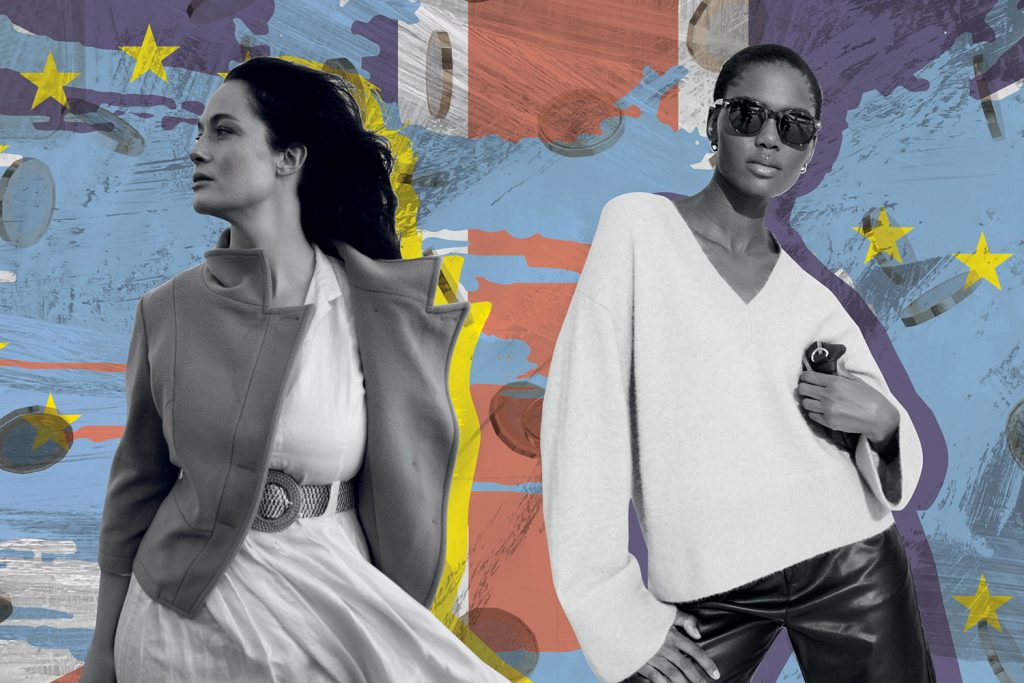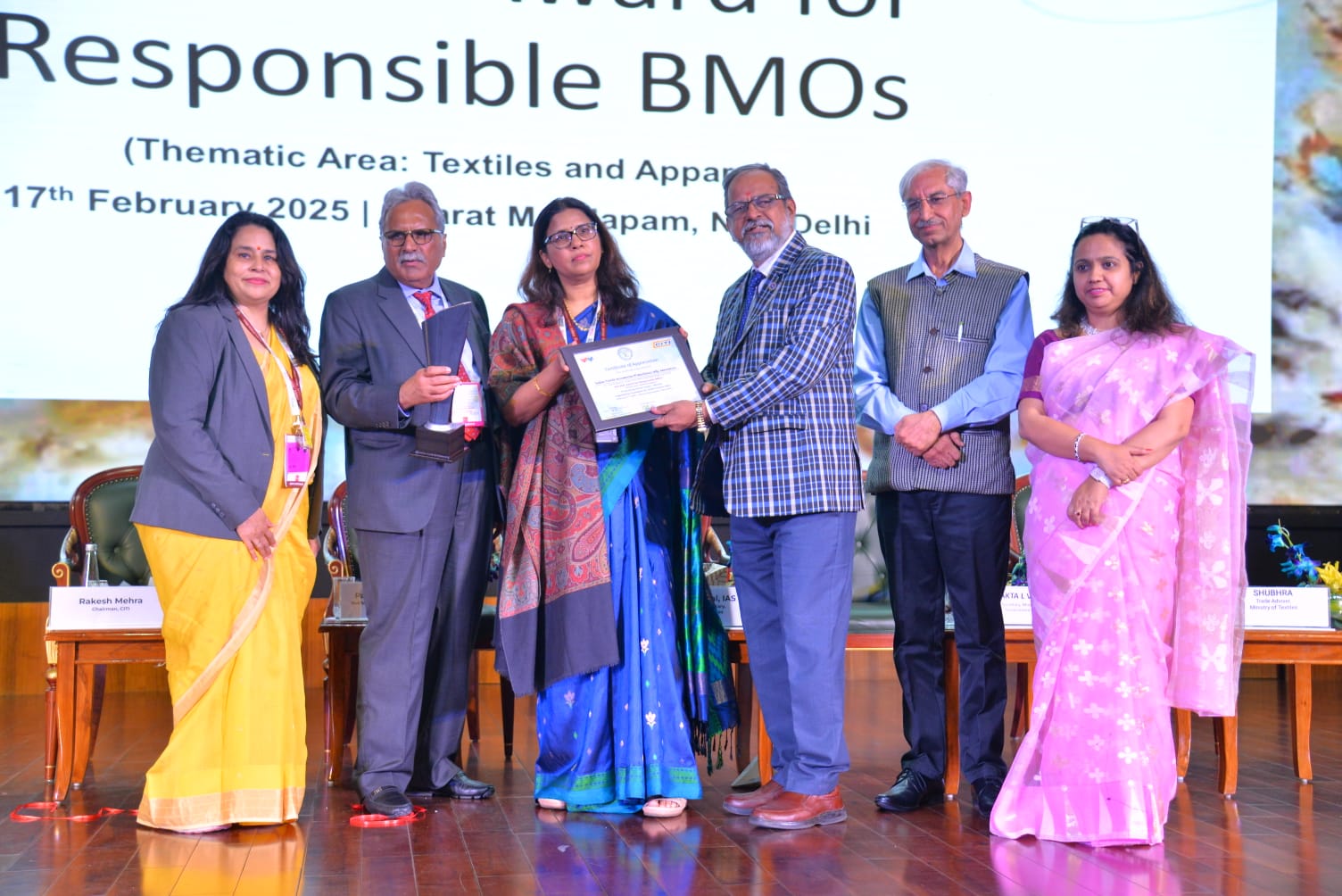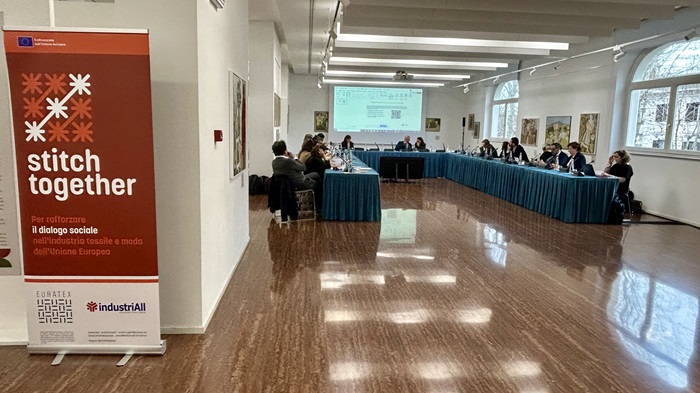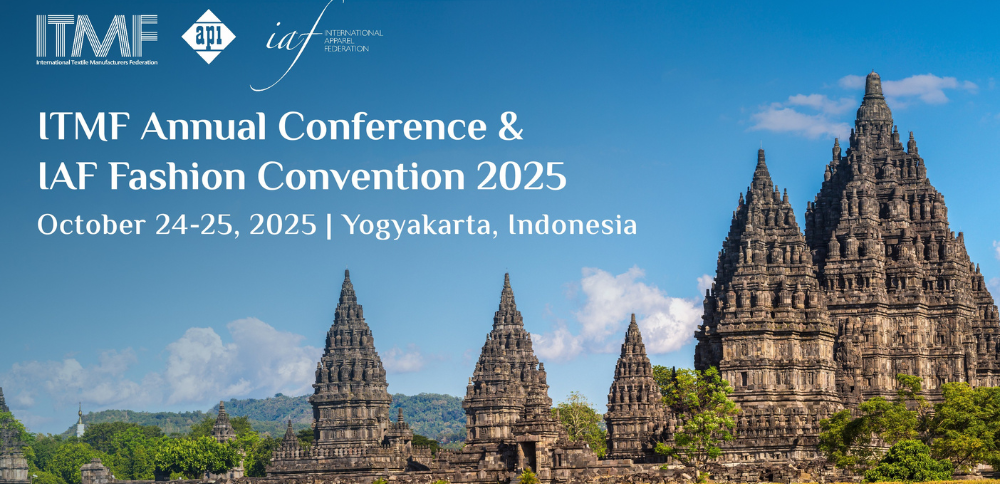FW

Five years have passed since the UK left the European Union, and the impact on its retail sector continues to be felt. New data by Retail Economics and Tradebyte reveals almost £5.9 billion drop in British retail sales to the EU since Brexit. This anniversary serves as a stark reminder of the challenges faced by UK businesses and the evolving strategies they are adopting to survive and thrive.
Dip in British exports, retail sales
The ‘From Brexit to Breakthrough - Market Expansion for UK Brands’ report, initially published in June 2024, reveals a concerning picture. Clothing exports have been decimated, falling over 60 per cent from £7.4 billion in 2019 to just £2.7 billion in 2023. This decline underscores the sector's vulnerability to post-Brexit trade barriers. The composition of UK exports has also shifted significantly. Apparel, once a leading export, has been overtaken by health and beauty, electrical, and DIY and gardening products, which now constitute three-quarters of UK non-food retail exports to the EU. Even these sectors have not been immune to the downturn, with the overall value of non-food retail exports falling nearly 18 per cent since 2019, despite the mitigating effect of inflation.
Trade frictions a bane
Beyond the headline figures, the report highlights the significant role of Brexit-related trade frictions. Increased logistics costs, complex customs procedures, and regulatory hurdles are hindering international online retail opportunities for UK brands. These complexities are estimated to be costing EU economies a staggering £322.6 billion. The added bureaucracy and expense have made it significantly more difficult for UK businesses to compete in the lucrative European e-commerce market.
UK brands take the online route
However, amidst these challenges, a new avenue for growth has emerged: online marketplaces. These platforms have become a vital lifeline for UK brands seeking to regain lost ground in the European market. With online marketplaces now accounting for at least £133 billion (two-fifths) of EU e-commerce, they offer a significant opportunity for UK retailers to access a vast customer base.
“Five years after Brexit, UK retailers are still navigating its long-term effects, particularly when it comes to trading with EU consumers,” says Richard Lim, CEO, Retail Economics. “Many have experienced a significant drop in trade flows, making it harder to maintain connections with key European markets.” Lim emphasizes the crucial role of digital marketplaces in mitigating these challenges. “For brands looking to expand internationally, digital marketplaces have become an essential lifeline, providing a practical route to reach global audiences while overcoming complex trade barriers. By embracing these platforms, retailers can mitigate some of the challenges posed by Brexit and refocus on growth opportunities in an increasingly competitive global market.”
Alexander Otto, Head of Corporate Relations at Tradebyte agrees and says, “Brexit has transformed the UK retail landscape, creating significant obstacles for UK brands and retailers aiming to expand in Europe, and making it far harder for them to tap into the flourishing EU e-commerce market. Online marketplaces now represent a platform for innovation and a scalable, low-risk path to reach affluent and younger EU consumers across a range of markets. They have emerged as crucial platforms to offset the challenges of Brexit and offer vital growth drivers in a competitive global market.”
The data clearly indicates while Brexit has undoubtedly created significant headwinds for UK retailers, particularly those reliant on EU trade, online marketplaces offer a potential pathway to recovery and growth. The shift towards digital platforms is a strategic adaptation in the post-Brexit scenario, allowing businesses to navigate complex trade barriers and tap into the vast potential of the European e-commerce market. The next five years will be crucial in determining whether this strategy can fully offset the negative impacts of Brexit and pave the way for a more resilient and globally competitive UK retail sector.
Gucci showcased its first collection at the Milan Fashion Week since the departure of its Creative Director, Sabato De Sarno.
Presented at Superstudio Maxi, the fashion show to showcase the collection was accompanied by an original soundtrack from Oscar-winning composer Justin Hurwitz of ‘La La Land’ fame. Hurwitz conducted a live chamber orchestra for a front row that included François-Henri Pinault, CEO, Kering alongside celebrities like Julia Garner, Jessica Chastain, and Dev Patel.
Designed by Gucci's in-house team, the collection offered a blend of past and present, featuring nods to various decades. Highlights included '60s-inspired fur coats and mohair peacoats, knee-length skirts with side slits, tailored tunics, and Donegal tweed suits. '90s influences were also evident in slip dresses, oversized blazers, and bouclé mini dresses. Interlocking "G" print velvet dresses and semi-sheer skirts with velour leotards and gold stirrup pendants added a touch of glamour. The collection also featured new iterations of the 1955 horse-bit bag, emphasizing commercial appeal.
In contrast to the Alessandro Michele era, which often presented a more bohemian aesthetic, this collection exuded a refined elegance.
The menswear segment featured sharp tailoring, including double-breasted suits with elongated jackets and slim pants. Mohair cardigans were also prominent, though the repetition of similar coat designs in different materials raised questions.
The show concluded with the in-house design team taking a collective bow, all wearing Castleton green sweatshirts.
Zegna has launched its Winter 2025 collection, based on the concept of ‘Vellus Aureum,’ a tribute to the world's finest wool. The concept symbolizes the ongoing quest for excellence, evoking the legendary Golden Fleece of Greek mythology.
According to Alessandro Sartori, Artistic Director, the items in this collection are nonchalantly chosen and spontaneously mixed, recounting an encounter of generations in the name of Italian style. The collection features key garment pieces including deconstructed blazers with low, two-button closures, knee-length coats with cashfur collars, and blousons with lapels or stand-up collars and elasticated waists.
Sartori emphasizes knitwear as a central element of this collection, with deep v-necks revealing layered shirts. The color palette of this collection features fossile, ginepro, dark foliage, serra, castoro, Gattinara red, and falesia, with accents of Sessera, arnica, giglio montano, terracotta, and nero opaco.
Materials used to create this collection include wool cashmere, cashmere cotton corduroy, wool mohair cover, flannel wool, and Oasi Cashmere. The Il Conte jacket appears in shearling, as a gilet, and in Oasi Cashmere jersey.
Following the success of the apparel park in Pithampur, the Madhya Pradesh Government plans to set up a textile park under the PM Mitra scheme in the Malwa region. The park will be a key feature at the upcoming Global Investors Summit (GIS) 2025 in Bhopal.
Inspired by Prime Minister Narendra Modi's 5F vision, PM Mitra Parks are being developed at seven locations across India through special purpose vehicles (SPVs). These Greenfield textile parks will receive Central Government support of Rs 500 crore.
The Madhya Pradesh Government will showcase this park at the GIS, aiming to attract industries to establish operations. The park will provide comprehensive facilities, from design to dyeing, for investors. A dedicated textile expo will be organized at the GIS to attract investors in the textile sector, as per a government official.
Approved by the Government of India in March 2023, the park will be located in Bhensola village of Badnawar tehsil in Dhar district. It will be developed as per a memorandum of understanding (MoU) signed between the Ministry of Textiles and the Madhya Pradesh Government on May 21, 2023.
Madhya Pradesh is a significant producer of high-quality cotton, yielding 317,000 metric tons, which accounts for 24 per cent of the world’s non-GMO organic cotton and 47 per cent of India’s non-GMO organic cotton. Additionally, the state is the sole producer of extra-long staple (ELS) cotton in India.
In a high-level meeting last June, the Chief Minister emphasized the need to expedite the Rs 500 crore project approved by the Textile Ministry for the Integrated Textile and Apparel Park in Dhar district. He urged agencies to work swiftly to create 25,000 jobs through 21 units in the PM Mega Textile Park. The government has allocated Rs 4,445 crore for these parks up to 2027-28.

Indian Textile Accessories & Machinery Manufacturers Association (ITAMMA) has been honored with the 8th FMC Award for Responsible BMOs at the national level for its contributions to promoting social issues in the textiles and apparel sector.
N D Mhatre, Director General (Tech) of ITAMMA, received the award on February 17, 2025, at Bharat Mandapam, New Delhi. The award was presented by Prajakta L. Verma, IAS, Joint Secretary, and Roop Rashi Mahapatra (IA&AS), Textile Commissioner, Ministry of Textiles, Government of India.

The ceremony was attended by several key industry leaders, including Mukesh Gulati, Executive Director of the Foundation for MSME Clusters, Rakesh Mehra, Chairman of CITI, and Chandrima Chatterjee, Secretary General of CITI.
A total of 135 applications were reviewed across different categories, with only 16 organizations shortlisted for awards. ITAMMA’s recognition highlights its significant contributions to India’s textile machinery sector and its role in driving innovation and excellence.
The award ceremony celebrated outstanding contributions to the textile and MSME sectors, honoring organizations that have made a meaningful impact. ITAMMA’s achievement further reinforces its leadership in advancing India’s textile industry.
Designers’ commitment to creating ethical styles is driving the popularity of vegan fashion in both India and Japan. In India, designers like Anita Dongre are creating their entire collections from vegan materials, proving that luxury and sustainability can coexist. On the other hand, Japanese brands like Saisei are repurposing vintage kimonos into modern, chic vegan garments, merging tradition with innovation.
Artisans in both the countries are blending traditional textiles like khadi and Tencel with contemporary designs. These eco-friendly fabrics are helping revitalize heritage by transforming historical materials into sustainable apparel.
A significant development in vegan fashion is the rise of plant-based leathers with Indian startups experimenting with materials derived from flowers and fruits, such as pineapple leather (Piñatex). On the other hand, Japanese designers have created durable alternatives from mushroom mycelium. These materials not only replicate the texture and strength of conventional leather but also provide a sustainable option for environmentally conscious consumers.
The growing popularity of vegan fashion is primarily fueled by increasing consumer awareness of animal welfare and environmental concerns. In both India and Japan, social media campaigns and educational initiatives have played a crucial role in promoting the benefits of cruelty-free choices. As more consumers prioritize sustainability, retailers in these countries are expanding their vegan product offerings.
Collaborations between Indian and Japanese designers and international brands are elevating vegan fashion on a global scale. These partnerships introduce fresh perspectives and facilitate cross-border knowledge sharing on sustainable practices. By working together, these creative minds are pushing the boundaries of eco-conscious apparel design.
Nike is set to launch a new brand, ‘NikeSkims,’ in collaboration with the Kim Kardashian-owned label, Skims. Focusing on women's training apparel, footwear, and accessories, this brand will boost Nike's ‘gender offense,’ as stated by Elliot Hill, CEO, and position NikeSkims alongside established brands like Jordan, Nike, and Converse.
This new venture follows Nike's historic partnership with Michael Jordan in 1984, which began with a $500,000 annual contract plus royalties. The subsequent launch of Air Jordans, starting with the Air Jordan 1 in 1985, led to the Jordan brand generating approximately $6.9 billion in wholesale equivalent revenue for the FY2023-24, representing about 17 per cent of Nike's total sales.
Nike is now leveraging Kardashian's global influence and over 350 million Instagram followers to replicate this success. Co-founded by Kardashian in 2019 as a shapewear brand, Skims has since expanded into loungewear and is now valued at $4 billion.
NikeSkims is slated for a spring launch, with global expansion planned for 2026. Skims' proven consumer appeal was demonstrated by its collaboration with The North Face, which sold out within hours of its launch on December 10, 2024.
India plans to leverage a proposed bilateral trade agreement with the United States to boost textiles exports, in anticipation of potential reciprocal tariffs. This move comes as the US government has indicated its intent to implement such tariffs, particularly against nations with perceived high import duties, such as India.
The Indian government's strategy focuses on mitigating the negative effects of any US tariffs through favorable terms secured in the trade agreement. Key industries targeted for export growth include textiles, aluminum, and steel.
According to the research organization, Global Trade Research Initiative (GTRI), the textile sector is especially vulnerable due to the significant difference in tariff rates between India and the US. To mitigate their impact, India plans to establish a trade framework to safeguard its export-oriented industries from the potential US trade measures.

Social partners from Italy’s textile and fashion industry gathered in Rome on 19-20 February 2025 to discuss upcoming EU legislations and their impact on the sector. The event, part of the EU co-funded StitchTogether project, also led to the drafting of the Rome Declaration, reinforcing their commitment to a stronger social dialogue.
The meeting brought together Confindustria Moda, national trade unions (Femca-Cisl, Filctem-Cgil, Uiltec-Uil), regional clusters, and businesses. They focused on a sectoral industrial policy strategy aimed at strengthening Italy’s textile-clothing supply chain, which they plan to present to the Italian Government and the EU Commission.
The Rome Declaration outlines key priorities, including competitiveness, fair labor conditions, skills development, regional growth, and a just transition. It also calls on policymakers to support the industry's transformation amid green and digital shifts.
Judith Kirton-Darling, IndustriAll Europe’s general secretary, emphasized Italy’s significance, noting it employs 300,000 workers 24 per cent of Europe’s textile workforce. She highlighted social dialogue as a key tool to ensure job security and better working conditions.
Euratex Director General Dirk Vantyghem underscored Italy’s role, contributing 36 per cent of Europe’s textile and fashion industry. He stressed the need for a strong, innovative Italian sector as a model for Europe, where employers and workers collaborate to drive quality and creativity.
With global challenges ahead, Italy’s textile industry aims to lead the EU’s transformation with a united, forward-thinking approach.

The 40th IAF World Fashion Convention will take place on October 24-25, 2025, in Yogyakarta, Indonesia, bringing together top leaders and innovators from the global apparel and textile industry.
Following the success of last year’s event in Samarkand, which hosted nearly 400 participants from 44 countries, this year’s convention promises even greater impact. The International Apparel Federation (IAF) is once again collaborating with the International Textile Manufacturers Federation (ITMF) to create an unparalleled platform for industry collaboration, innovation, and learning.
Attendees can expect expert insights on navigating global trade shifts, adopting transformative technologies, and strengthening sustainability. High-profile speakers from leading brands like H&M, Inditex, Disney, Hugo Boss, and PVH, as well as experts from McKinsey, BCG, the World Bank, and the OECD, will share their expertise.
The event will also provide unparalleled networking opportunities with key executives, manufacturers, retailers, and policymakers shaping the global value chain. Yogyakarta’s rich textile heritage and thriving industry make it an ideal setting for exploring Indonesia’s dynamic apparel market.
More than just a conference, the IAF Convention is a catalyst for industry progress. Participants will engage in discussions that shape the future, with a strong focus on collaboration, innovation, and sustainability.












